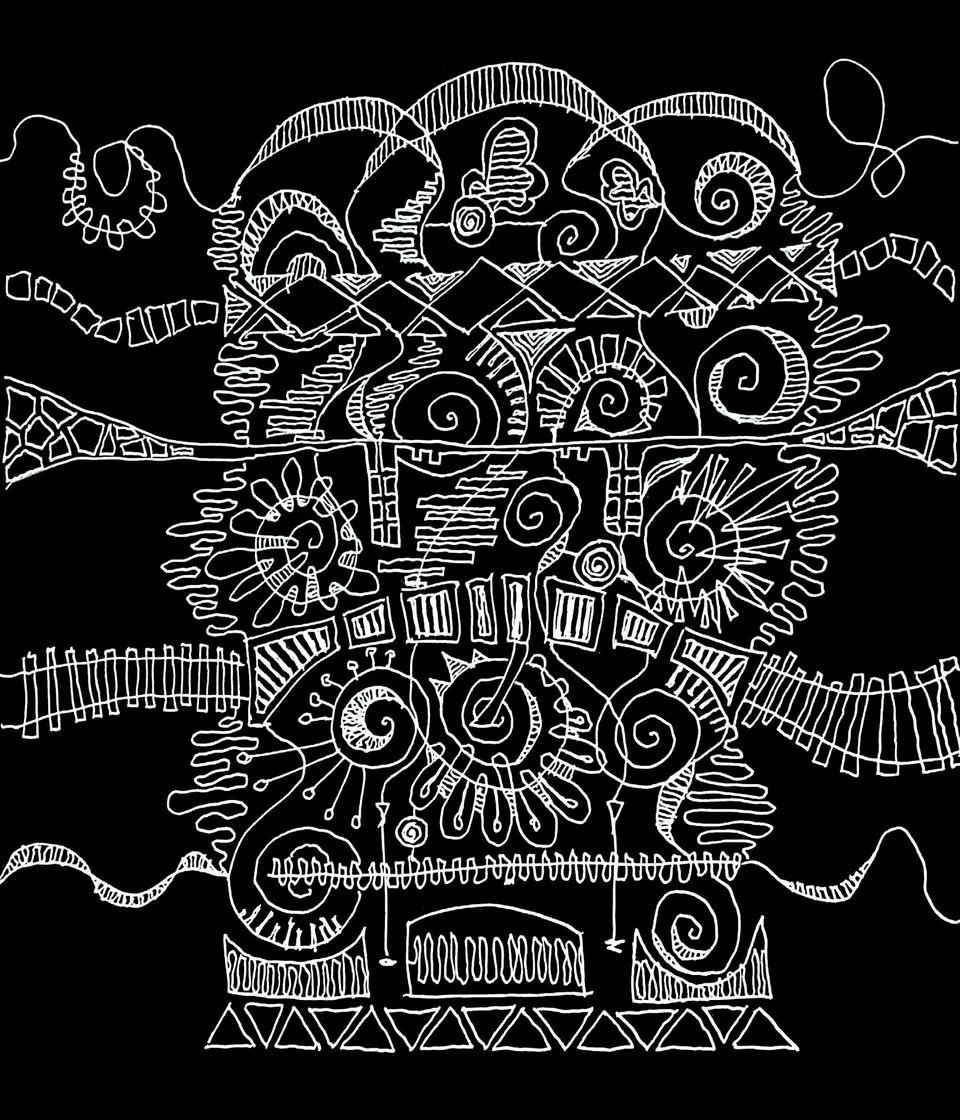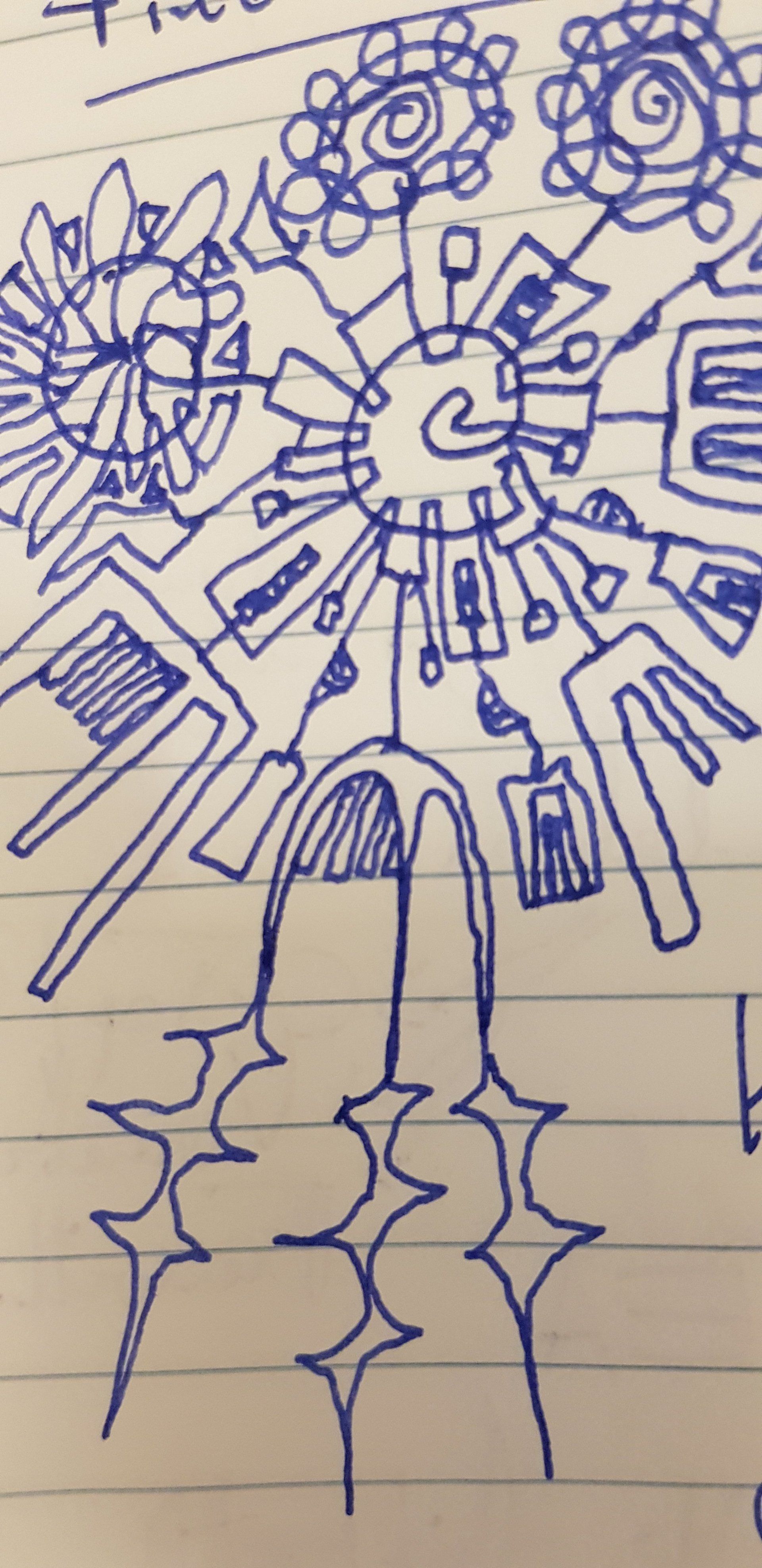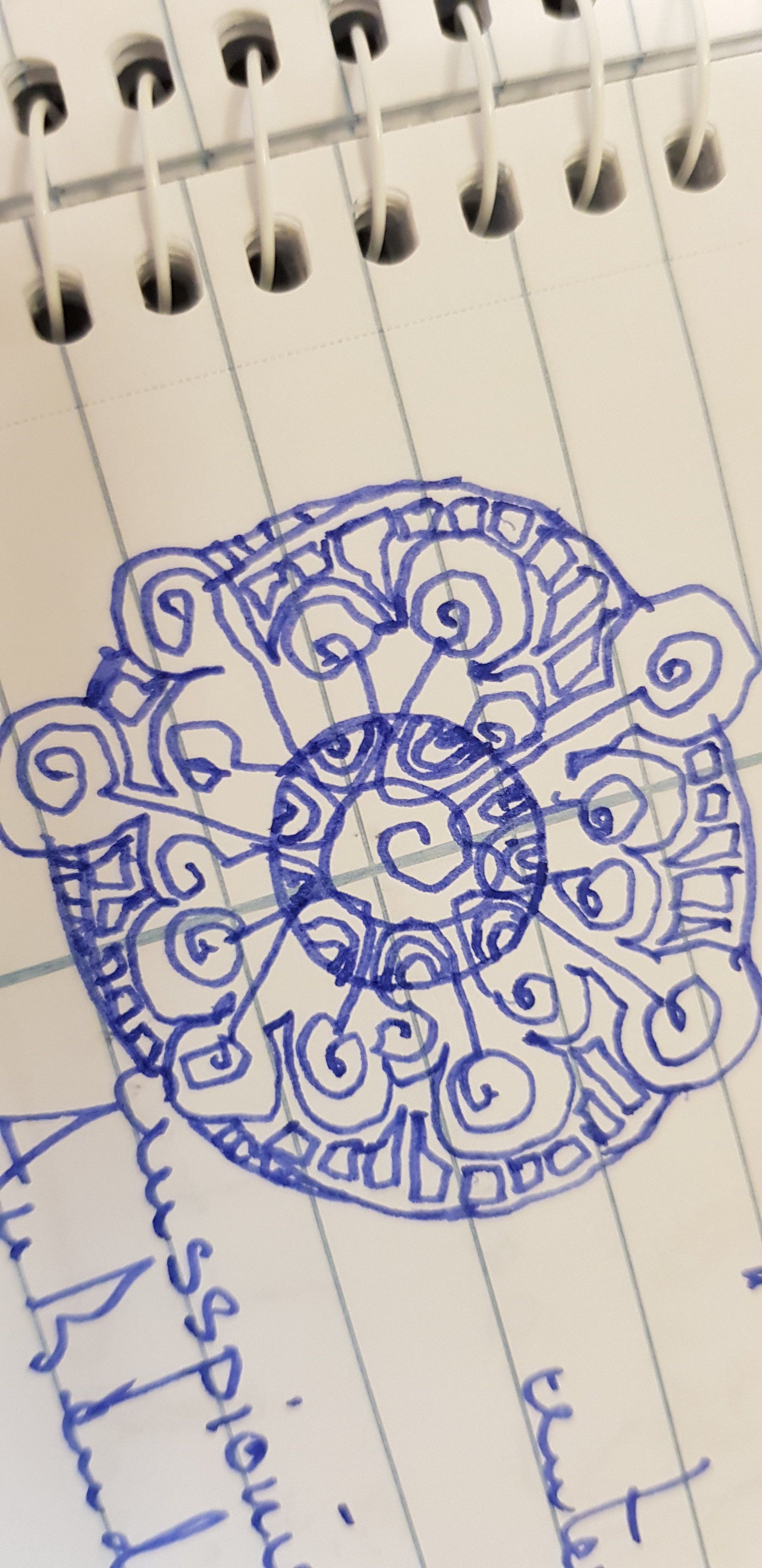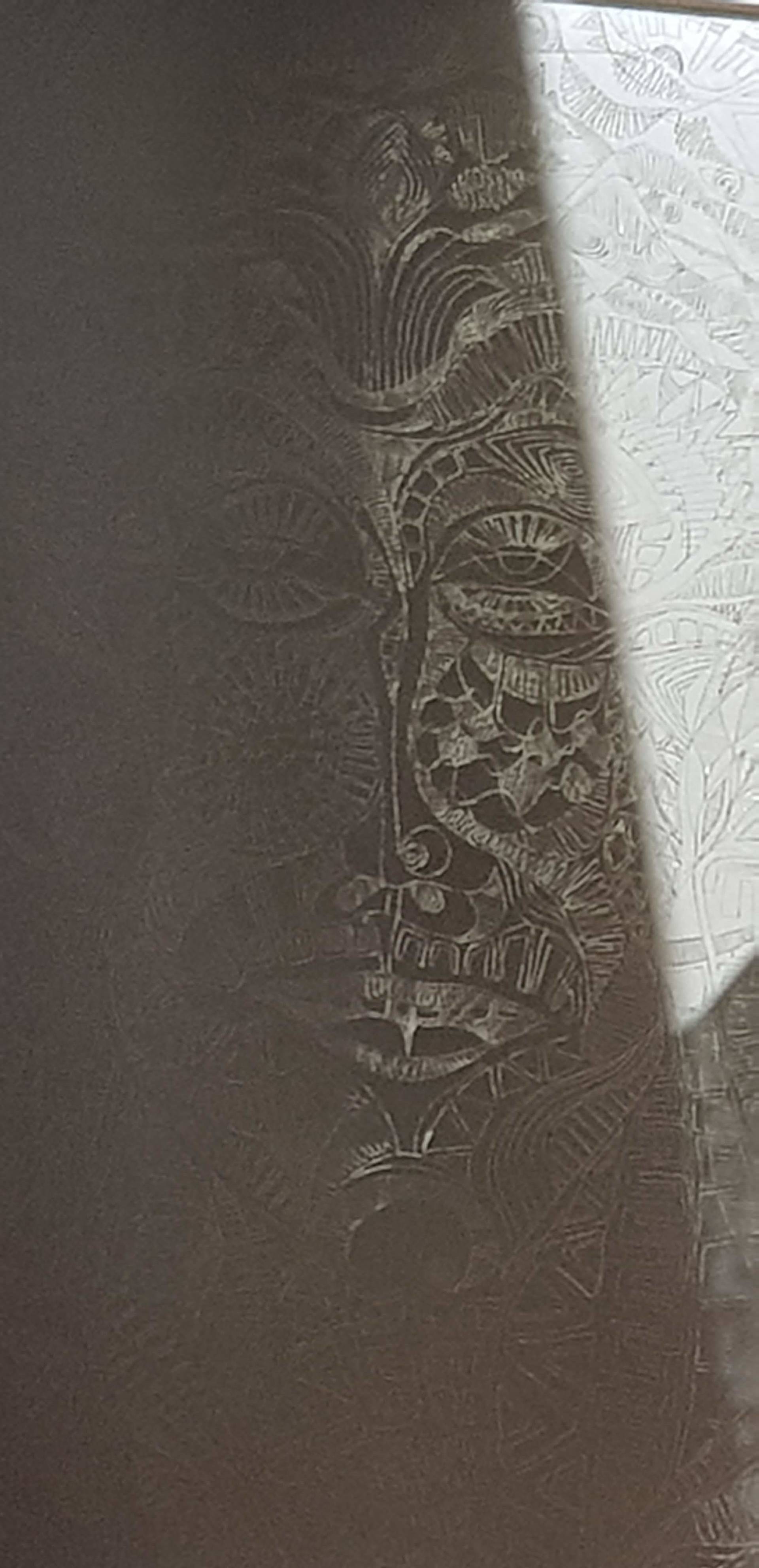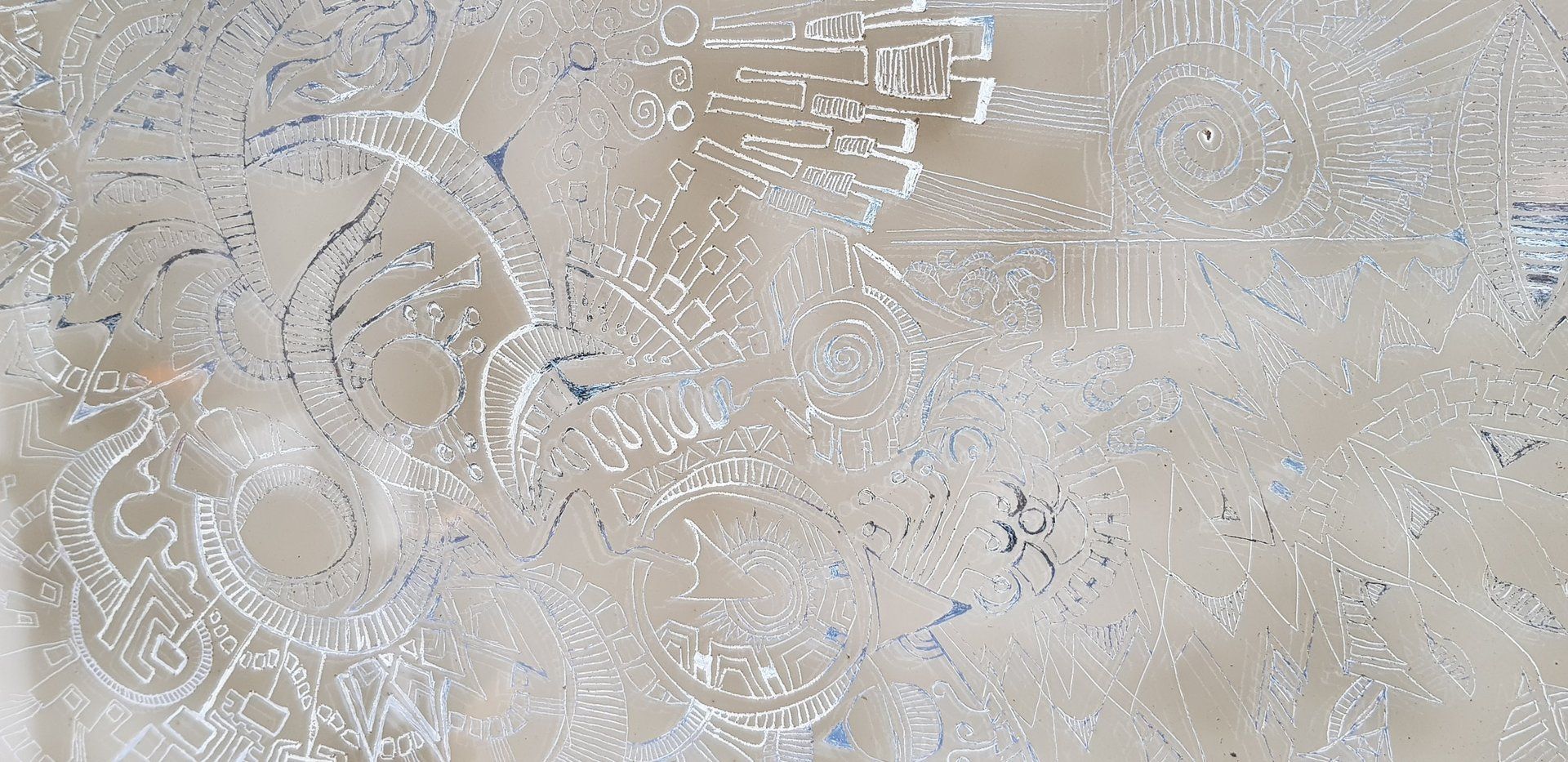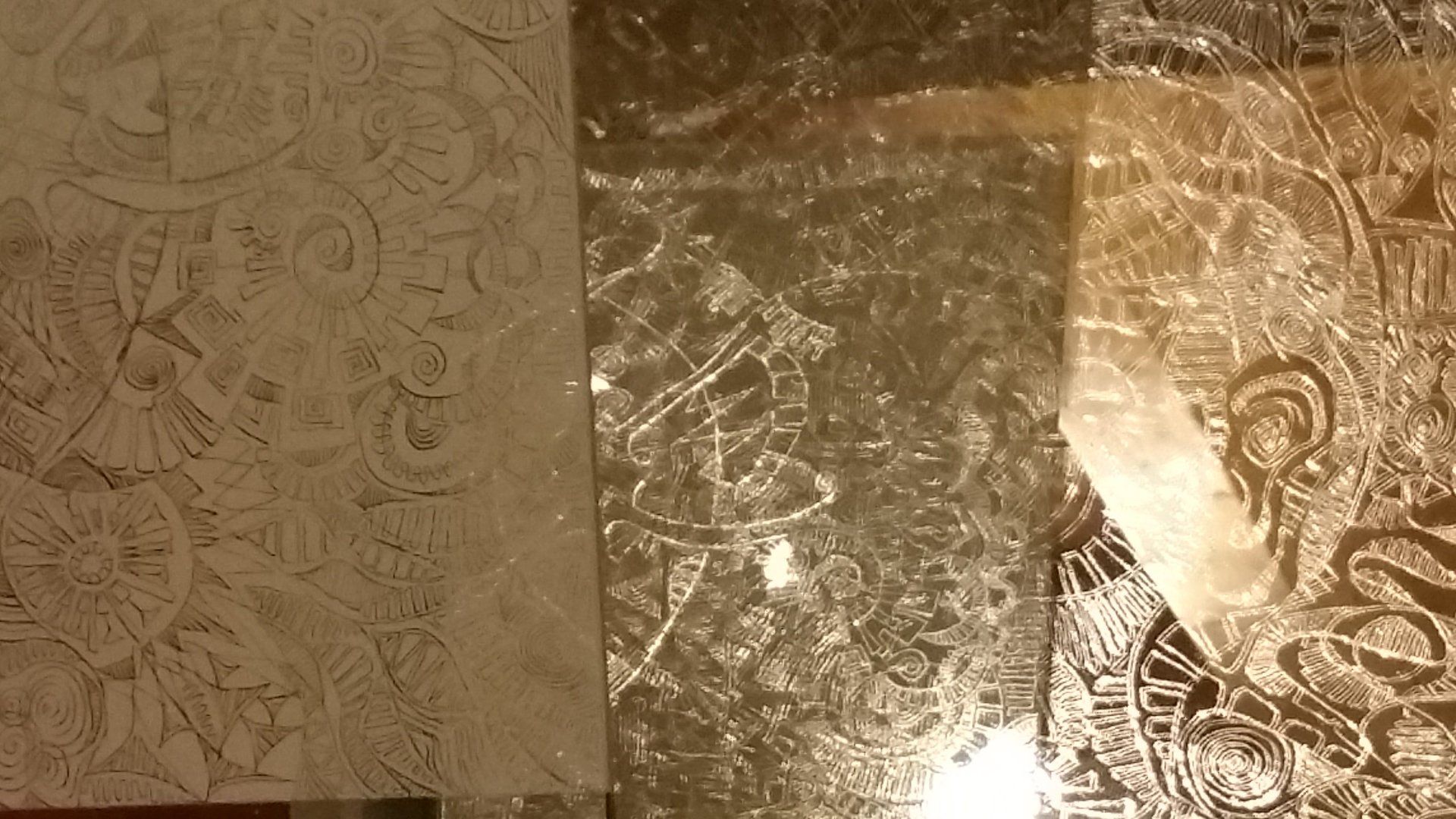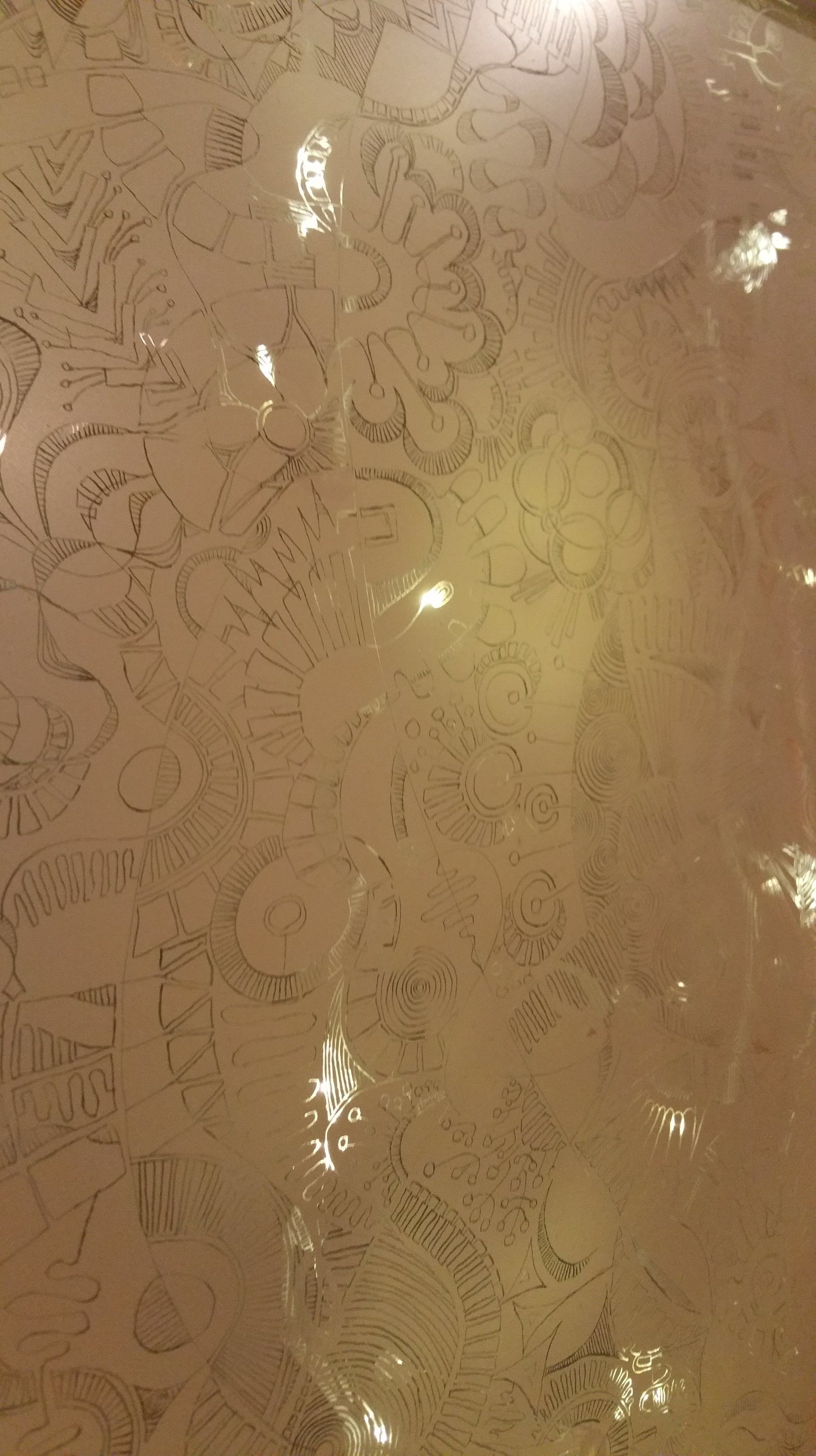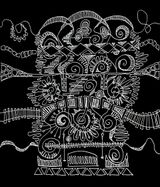Eikonogramm
Was ist das?
"Eikon" bedeutet auf altgriechisch "Bild" - davon auch das Wort "Ikone". Das Verb "grammein" bedeutet "schreiben, ritzen".
Eikonogramme sind Bilder aus Glas, das Glas wird lackiert, der Lack geritzt. Es entsteht ein Zueinander von Komplexität und Transparenz.

deep lightBilder aus dem Zwischenraum
Aus den Zwischenräumen und Fugen des reglementierten Lebens, am Rand der Tagesordnungen und ToDo-Listen wuchert das Gekritzel als widerständige Freiheit.
Schon als Kind faszinierte mich die Anfertigung von Landkarten imginärer Welten. Daraus verselbständigte sich die ornamentale Darstellung von Paradiesgärten und Palästen, „wo der König wohnt“.
Mit dem Erwachsenwerden habe ich das vergessen.
Später begegnete ich dem Mandala, dem Zueinander von Kreis und Quadrat als dem „Allbild“ von Himmel und Erde, Landkarte des Kosmos wie der Seele.
Meine „Mandalas“ sind mir dann mehrfach explodiert, wurden polyzentrische, chaotische Momentaufnahmen dynamischer Prozesse, innen, außen und haben doch ihre Grundbezugsform gefunden.
Ab dem Jahr 2000 entstand eine umfangreiche Serie von Mandala-Zeichnungen (Tinte auf Papier, schwarz-weiß, 21 mal 21 cm). Es entwickelte sich eine völlig eigenständige Bildsprache.
Zu rein assoziativen Formen kamen gegenständliche Elemente – vor allem Elemente von Gesichtern. Daneben können geschriebene Worte, Namen, Sätze als Ausgangspunkte dienen, sodass auch verborgene Kalligrafien entstehen können.
Aus den allumfassenden Bildern des Zueinanders von Himmel und Erde wurden gewissermaßen ausschnitthafte Momentaufnahmen einer Wirklichkeit hinter der Wirklichkeit.
Darüber hinaus wuchert das Gekritzel immer und überall weiter auf allen Schreibblöcken und Tagesordnungen, wie das Wachstum ungebetener Pflanzen in den Ritzen wohlgestalteter Flächen.
2013 entwickelte sich die Idee des Zerkratzens von lackierten Flächen, der Störung vordergründiger Ordnungen bzw. der polierten Oberfläche als der Vollendung des Wohlstandsmaterialismus. Daraus entstanden die „Eikonogramme“ auf Glas. Sie bleiben formal dem Quadrat verpflichtet. Erlaubt sind lediglich weiß, schwarz und rot.
Wer alles hat, dem bleibt nur noch zweierlei zu tun: aufzupolieren und abzustauben. Wer aber das knappste Gut der Gegenwart entdecken will, die Hoffnung, muss an den Oberflächen kratzen und wird möglicherweise feststellen: es ist alles erfüllt von einem tiefen Licht.
meet the artist
Why did you start being an artist?
I think, I was born this way. In fact I have to earn the living for my family. Thanks to god my job is a great place for many kinds of creativity. From this point of view I'm an artist full time.
What inspires you in order to create those unique artworks?
It's the various patterns of energy evident or secret, that make me scribble and scrawl. They emerge flowing in lines and points and circles and squares, triangels and stars, turning, tumbling, entwining.
Some of my engrammatic works are purely associative. Some start on a special idea or theme. Some are based on inscribed words or names, which disappear in the networks of lines. These I call cryptokalligraphic. Some develop around the text of a poem. These I call lyrical engramms.
Can you share with us what’s the process of creating your art?
My Engramms consist of a piece of glass plate, normally 50 to 50 centimeters, covered with white varnish, then scratched. This results into a special transparency similar to lace. Depending on the light the effect is changing all the time.
Can you tell us a little bit about yourself and what do you think that makes your art so unique?
I was born 1963 in Salzburg, married to Heidi and father of three children. I was graduated doctor of theology in 2000. Spiritual life always has been important for me. My art is affiliated to meditation and prayer. There are references to mandala-paintings and to the writing of icons. To me there is a deep light within. My job is simply to make it visible.
When I was a child I started to draw maps of fantastic landscapes. Geometrical structures marked the places "where the king dwells". As I grew older the scribblings developed until I recognized them as my inner landscape. But the soul is a mirrow of the cosmos. The link to mandalas which describe the relation of heaven and earth was near at hand and from there to the christian icons which are understood as windows to the devine.
Our social reality today is full of highlighted design and polished surfaces. It's time for scratching them up to take a look what's underneath. There may be so much more ...
What would you tell the person who purchased your art?
Just look and find out about the worlds behind the world. Experience the deep and feel light.
How does it make you feel seeing your art hanging in someone else’s home?
I wish you make it yours. It's up to you to find the right place. You can choose to purchase my glassworks LED lighted. You also might take them pure and give them some natural light from behind (e.g. in front of a window).
I will be happy to consult you about this, if you wish.
Similar to children growing up it hurts to let them go and makes me happy and proud at the same time.
